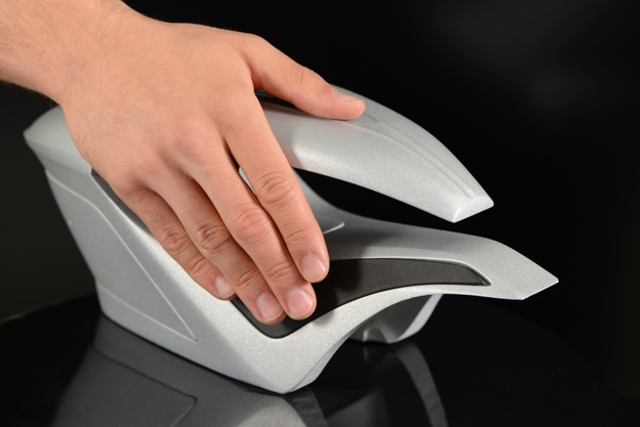Controls are becoming increasingly important for the variety of functions that can be accessed today. Meanwhile, the trend is away from classical controls such as e.g. switches to infinitely controllable functional elements that give the user but rarely feedback on the activation of the function. In addition, the appearance, especially in the interior of vehicles, plays an increasingly important role, which makes new demands on new controls.
An operating element developed at the Center Smart Materials and Adaptive Systems uses a variety of intelligent materials to meet current requirements. A proximity sensor is able to make the functional elements visible when the human hand approaches through depressions in the surface, and a function by means of the elastic and continuously controllable pressure sensors installed underneath can then be activated. The proximity sensor also has the task of preventing incorrect operation of the system, as it activates the sensor technology only when approaching the hand. Using the soft and changeable surface, an actuator can give the operator haptic feedback about the operation of the function. The use of thin-film piezoelectric switches enables the realization of pressure-sensitive surfaces, which can also be curved to trigger functions such as switching on and off, slide functions and pressure-dependent reactions.
